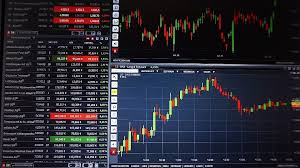Understanding Forex Trading A Comprehensive Example 1915122063

Forex trading, or foreign exchange trading, is the process of buying and selling currencies with the goal of making a profit. It is the largest and most liquid financial market in the world, where trillions of dollars are traded daily. In this article, we will explore a comprehensive example of forex trading, breaking down the fundamental concepts, strategies, and how one can start trading effectively. For more insight and resources on forex trading, consider checking out forex trading example Trading Broker UZ.
What is Forex Trading?
Forex trading involves the simultaneous buying of one currency and selling of another. Currencies are traded in pairs, such as EUR/USD (Euro/US Dollar), where the first currency is the base currency and the second one is the quote currency. The quote indicates how much of the quote currency is needed to purchase one unit of the base currency. For example, if the EUR/USD pair is trading at 1.2000, it means that 1 Euro is worth 1.20 US Dollars.
The Forex Market
The forex market operates on a 24-hour basis, opening on Sunday evening and closing on Friday evening. It is divided into several major trading sessions: the Asian, European, and North American sessions. The liquidity and volatility of the market can vary depending on the time of day, with the overlap between the European and North American sessions being particularly active.
Forex Trading Example
Let’s consider a practical forex trading example to understand how it works in real-life scenarios.
Example Scenario
Suppose you have analyzed the market and believe that the Euro will strengthen against the US Dollar. Currently, the EUR/USD is trading at 1.1500, meaning 1 Euro is worth 1.15 US Dollars. You decide to buy 1,000 Euros.
To execute this trade, you would enter a buy order at the current market price of 1.1500. Therefore, your transaction would be:
- Buy 1,000 Euros at 1.1500
- Cost in USD: 1,000 × 1.1500 = $1,150
Now, let’s say after a few days, you notice that the Euro has strengthened, and the current exchange rate is 1.1700. You decide to exit your position and sell your Euros.
Your exit transaction would be:

- Sell 1,000 Euros at 1.1700
- Revenue in USD: 1,000 × 1.1700 = $1,170
Your profit from this trade would be:
- Profit = Revenue – Cost = $1,170 – $1,150 = $20
Understanding Leverage
One key aspect of forex trading is the use of leverage. Leverage allows traders to control larger positions with a smaller amount of capital. For example, if your broker offers a leverage of 100:1, you would only need $1,000 to control a position worth $100,000. While this can amplify profits, it also increases the risk of significant losses.
Risks in Forex Trading
Forex trading, while potentially lucrative, involves significant risks. Here are some of the primary risks traders should be aware of:
- Market Risk: The risk of losing money due to adverse movement in exchange rates.
- Leverage Risk: The use of leverage can magnify losses as well as gains, leading to significant financial risks.
- Interest Rate Risk: Changes in interest rates can affect currency values and impact your trading positions.
- Political and Economic Risks: Political instability or economic changes can lead to volatility in currency prices.
Getting Started in Forex Trading
For those who are interested in starting forex trading, here are the steps to consider:
- Choose a Reliable Broker: Research and select a reputable forex broker that suits your trading needs.
- Open a Trading Account: You will need to open a trading account with your selected broker to start trading.
- Fund Your Account: Deposit funds into your trading account to begin trading. Ensure you understand the minimum deposit requirements.
- Learn Trading Strategies: Familiarize yourself with various trading strategies and decide which one aligns with your trading style.
- Practice with a Demo Account: Before risking real money, practice your trading skills with a demo account offered by many brokers.
- Start Trading: Once you feel confident, begin trading with real money while continuously learning and adapting your strategies.
Conclusion
Forex trading presents numerous opportunities for traders willing to invest time and effort into understanding the market. With its unique characteristics and the potential for profit through currency fluctuations, it appeals to both seasoned traders and newcomers alike. By following sound trading practices, managing risks effectively, and trading responsibly, participants in the forex market can explore its vast possibilities with a clearer understanding of what to expect.
Remember, success in forex trading is not guaranteed, and it requires dedication, continuous learning, and strategic planning. Take your time to build a solid foundation and develop your trading skills to navigate this dynamic financial landscape successfully.
